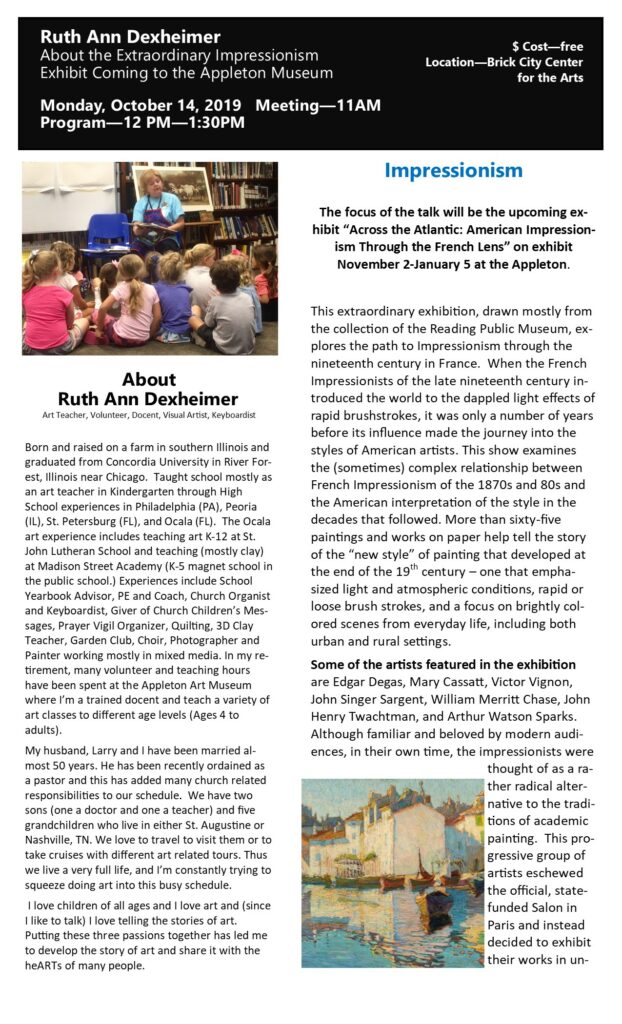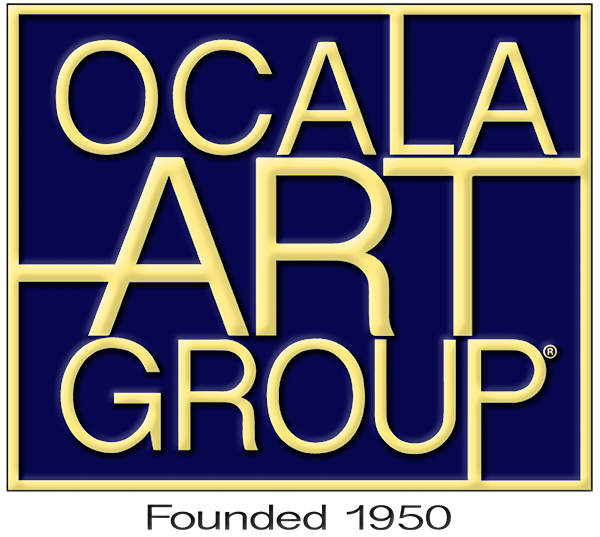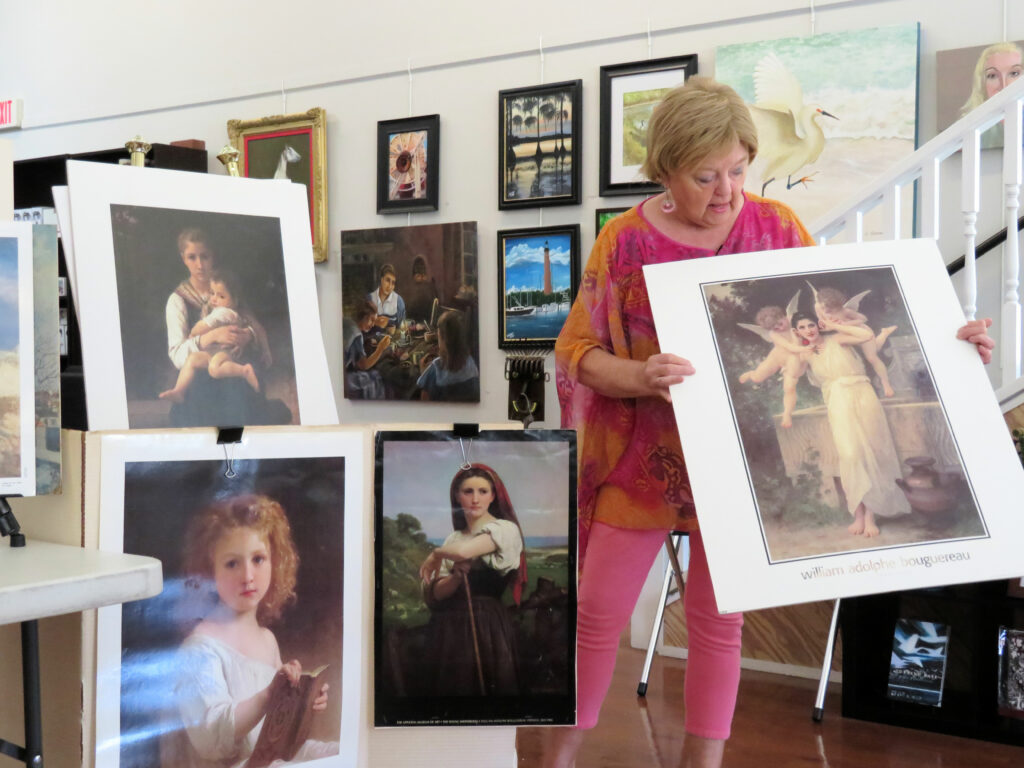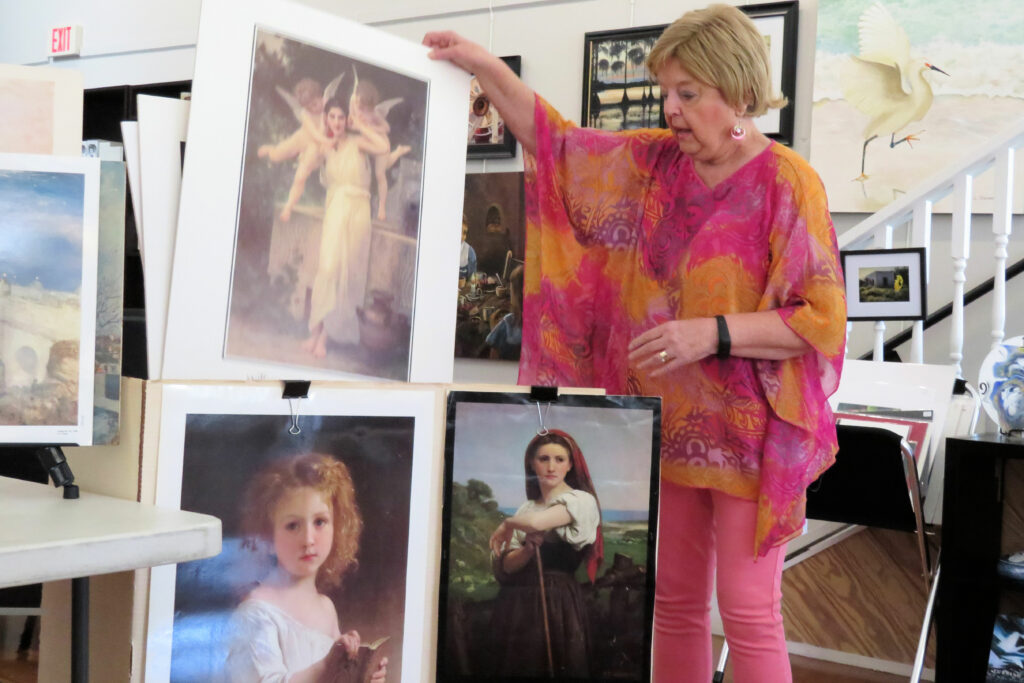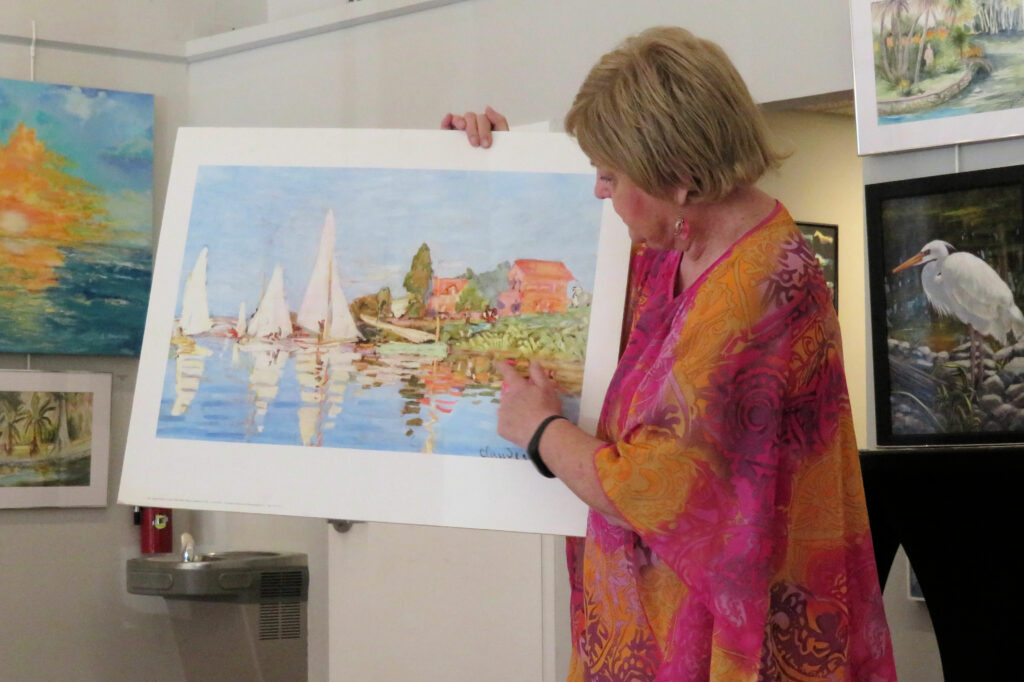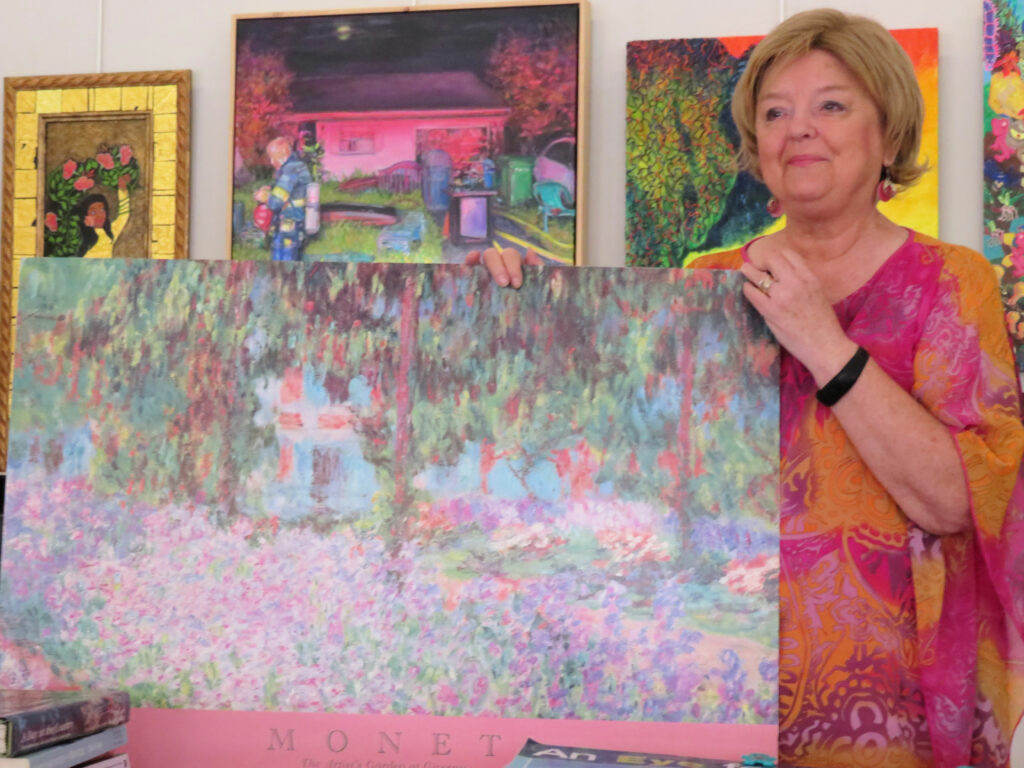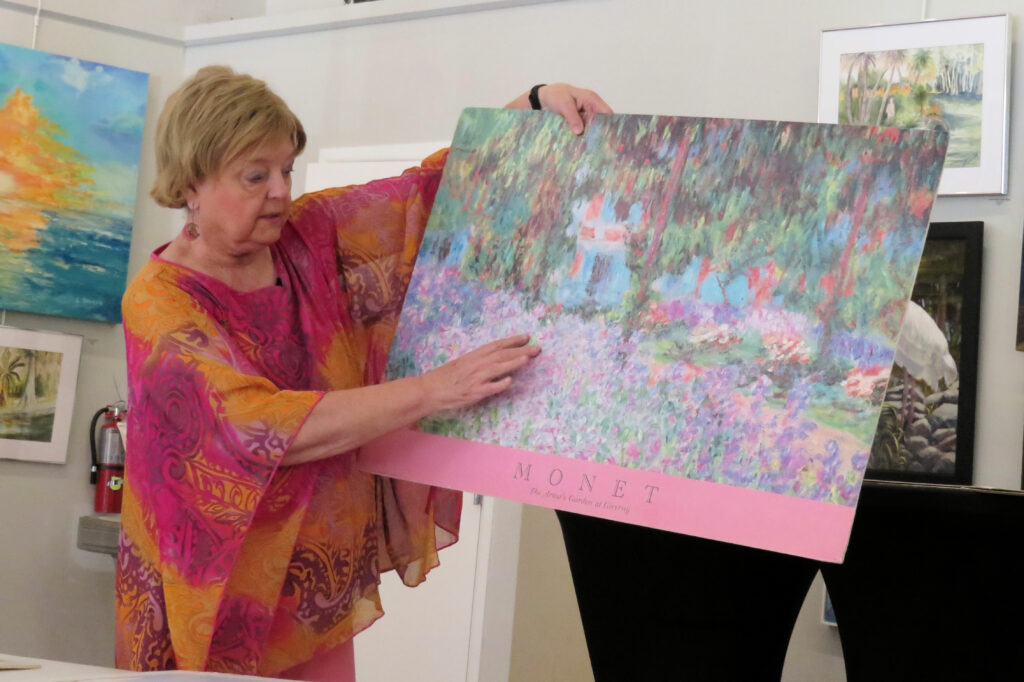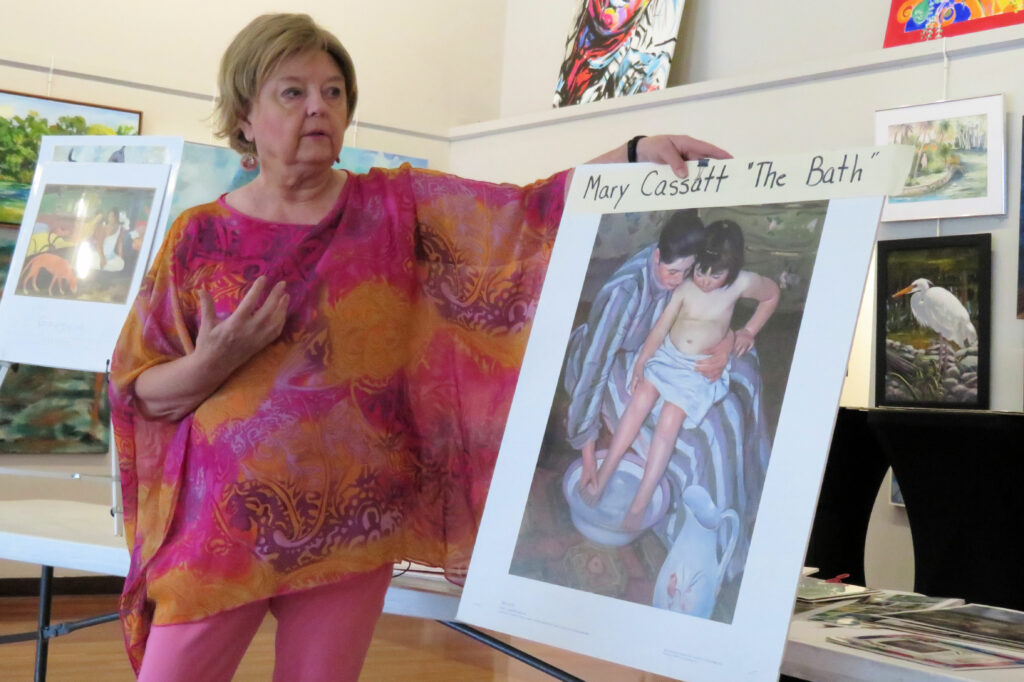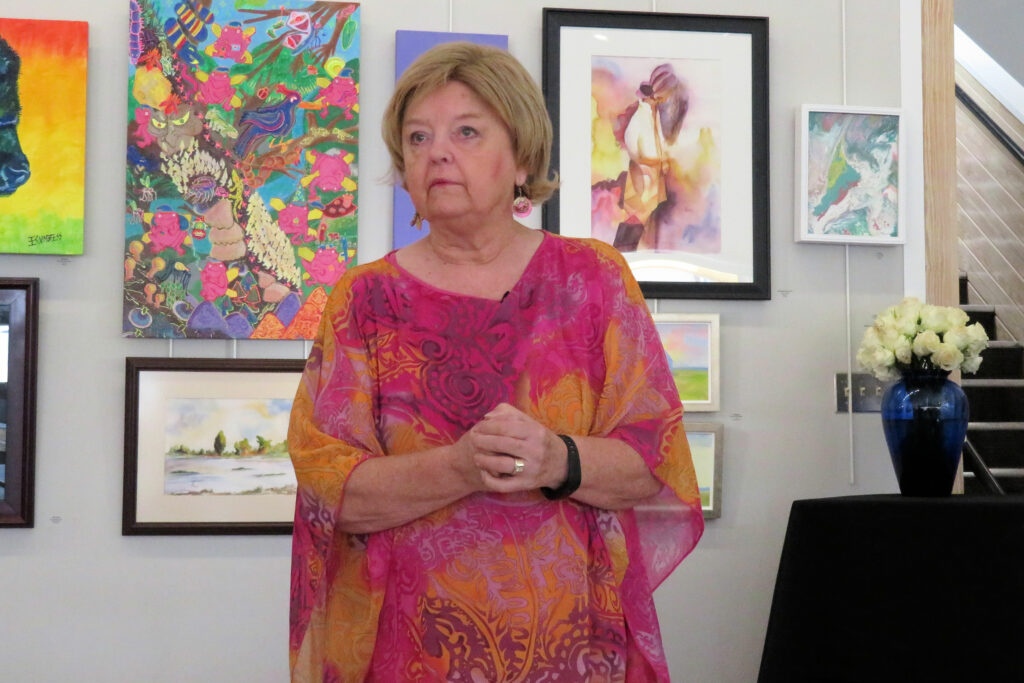
Ruth Ann Dexheimer used her prodigious collection of art posters of Master works to illustrate styles and trends around the time of the Impressionist period. Ruth Ann remarked that Arthur Appleton never purchased a Impressionist painting for his collection, but invested in several works by Bourguereau and the painters of his Salon. The style required the used of small brushes to achieve smooth textures, particularly skin tones. Although the Bourguereau paintings look realistic, they show idealized laborers with perfect features. Some local artists may have had the opportunity to learn this style from Jack Jackson, who taught at the Red Swan in Ocala.
The Industrial Revolution inspired artists like Barbizon and Turner to preserve on canvas the landscapes that were disappearing. Trade with Japan influenced artists in Europe when orders from Japan arrived wrapped in wood block prints.
Painters in the late 1800’s left the Salons to paint outdoors where light and color changed rapidly throughout the day. Painters depicted a scene, but also the feelings it evoked. Monet painted the same scenes in different light, using lines of paint to capture effects. The exhibit will feature some work by Monet.
Edgar Degas and Mary Cassatt are featured in the special Impressionism Exhibit at the Appleton Nov 2 – Jan 5. Considered radical in their time, Degas’ paintings at the horse races and the ballet studio reflected a new trend in composition, mimicking photos that cut off parts of the scene. Mary Cassatt endearingly captured scenes from everyday life.
Renoir learned from salon painters like Bouguereau and from the Impressionists. He often included both styles in a single painting: salon-like detail for closeups and soft impressions of distant figures.
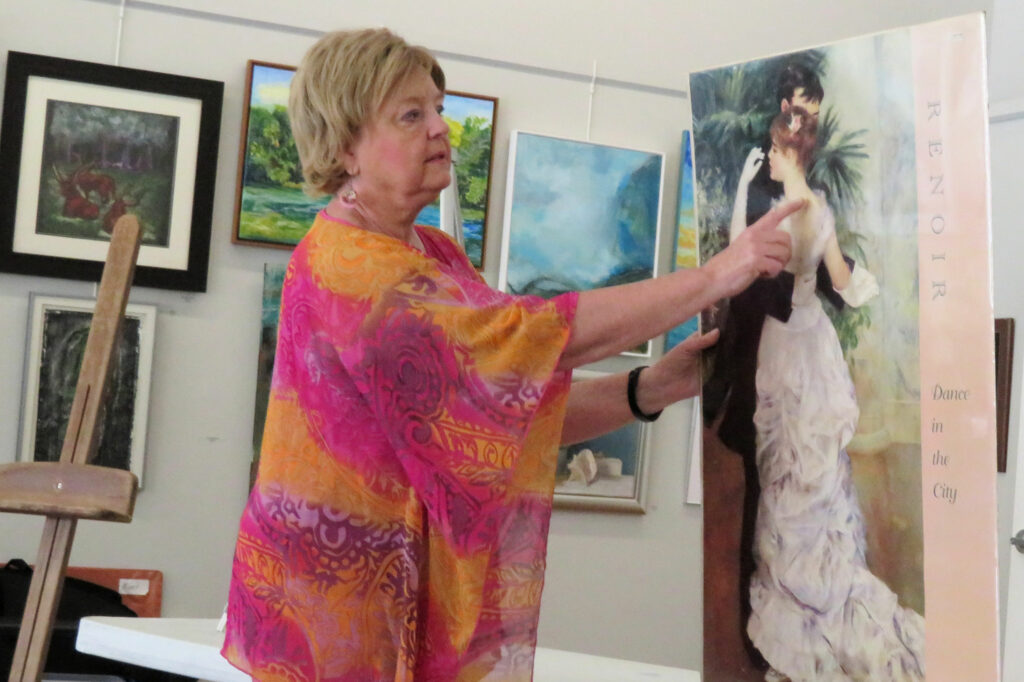
Titled “Across the Atlantic: American Impressionism Through the French Lens”, the exhibit will also feature American and Canadian Impressionists. Impressionism includes a broad range of artists and styles of painting; and the scope of one artist’s work often shows that the artist tried different styles. Ruth Ann urges us spend time in the galleries studying the works, and then explore some of these styles in our own paintings. Our own work will improve, inspired by the Masters.
Thank you, Ruth Ann, for this informative presentation that has surely deepened our appreciation of the special exhibit on loan to the Appleton Museum from the Reading Public Museum November 2, 2019 – Janurary 5, 2020.
